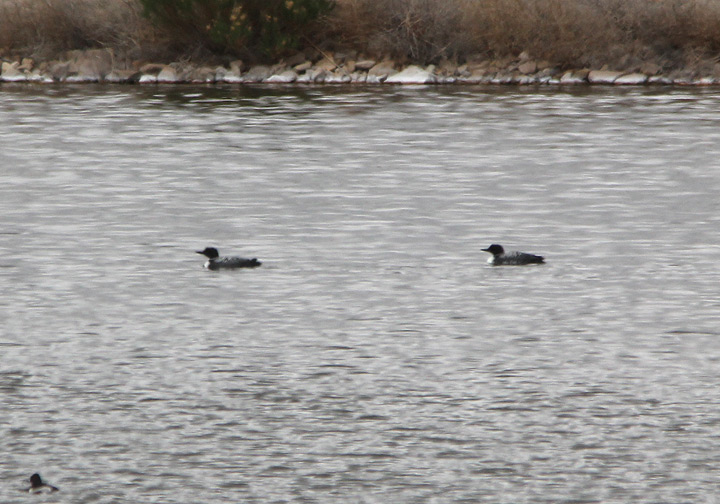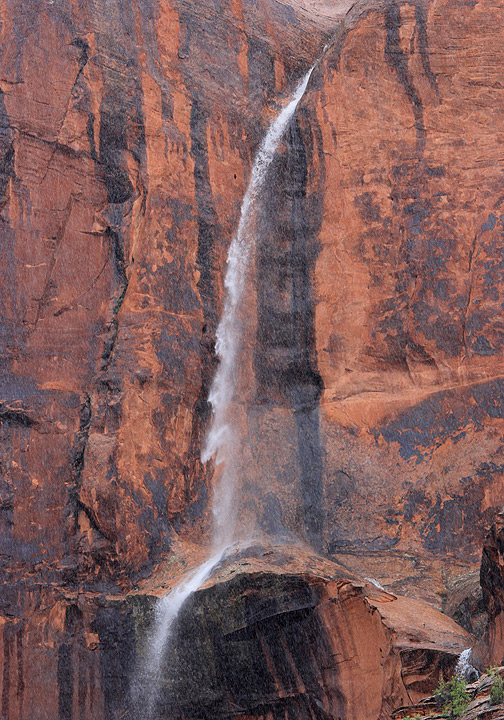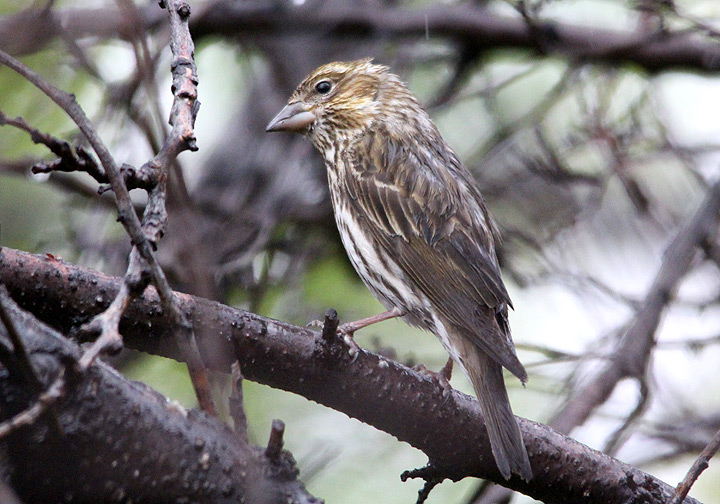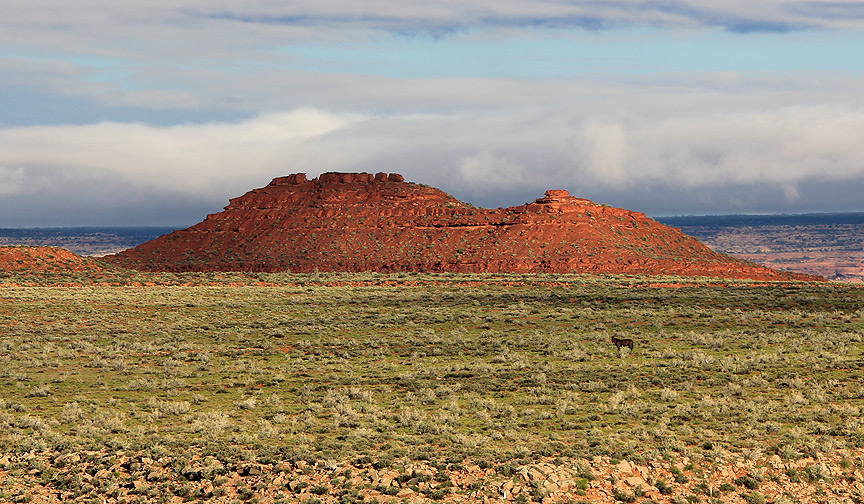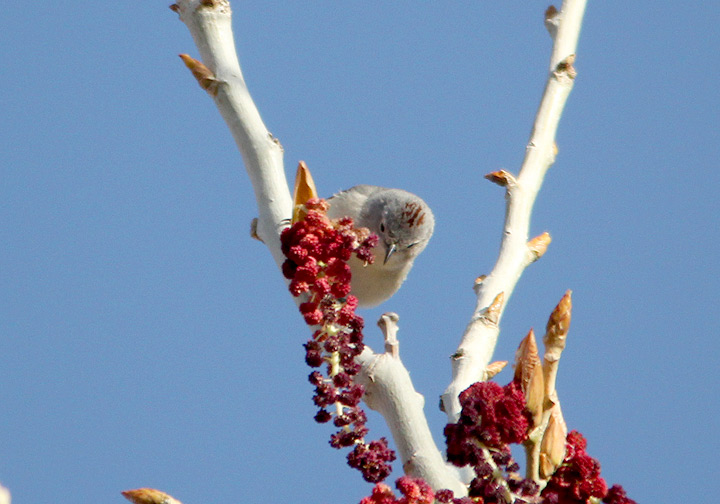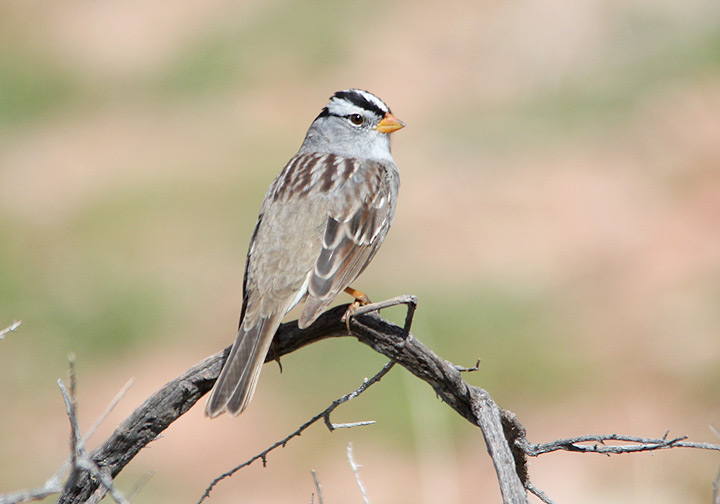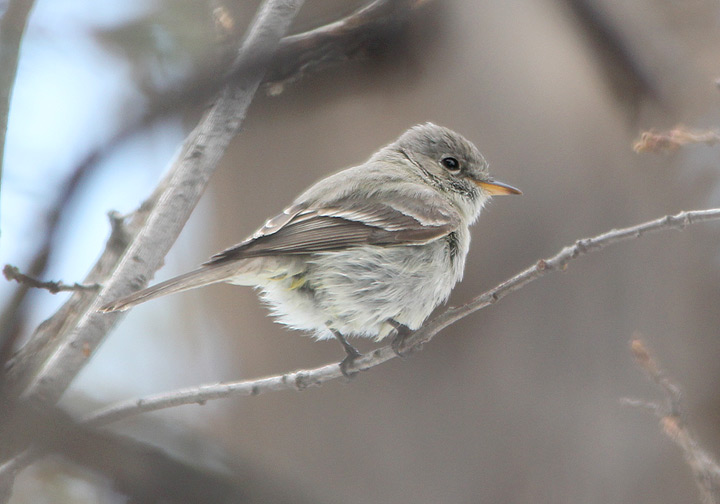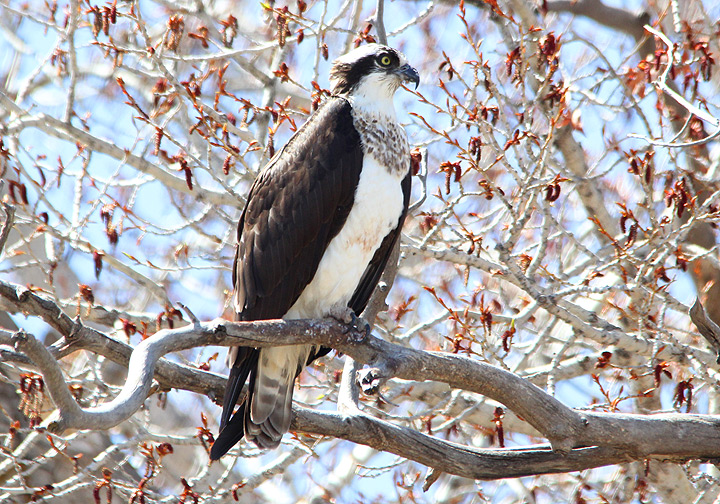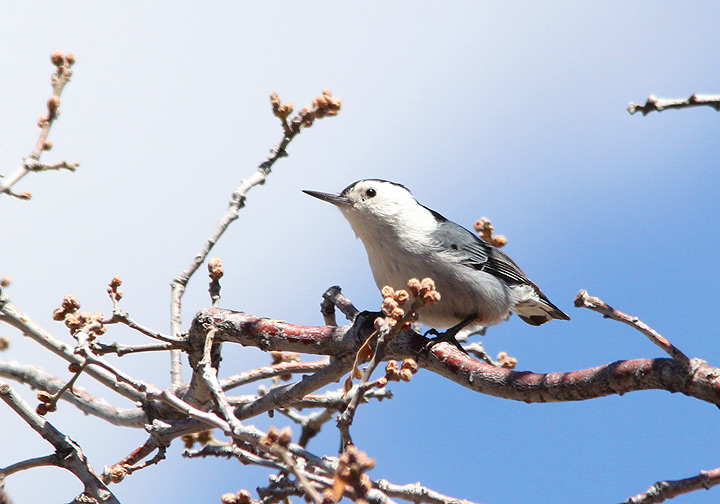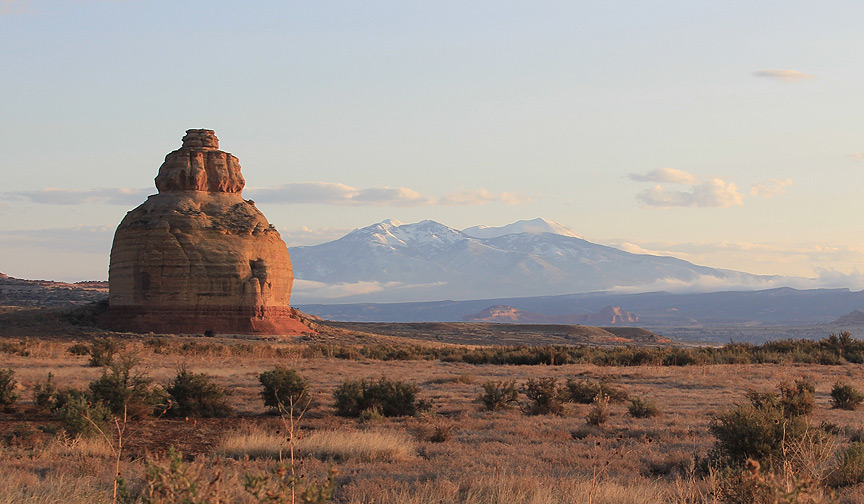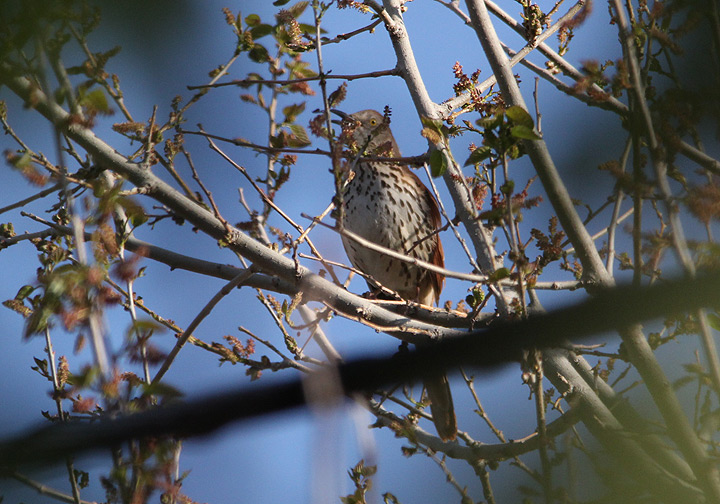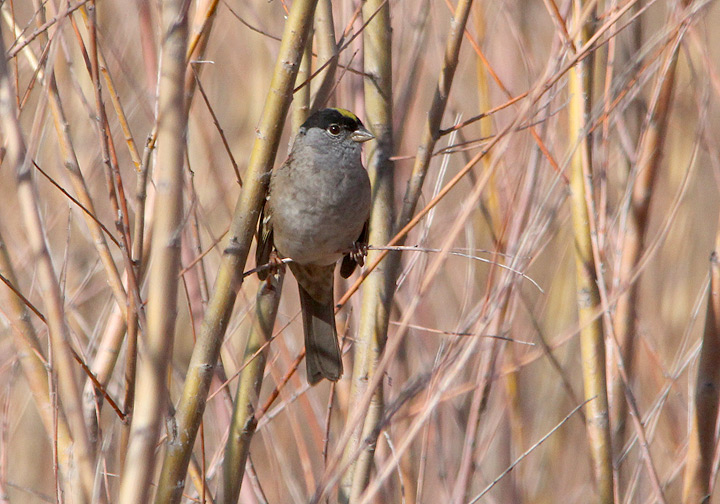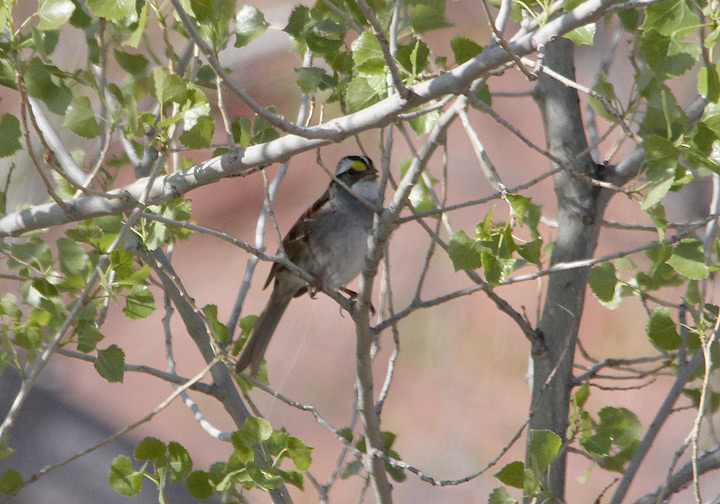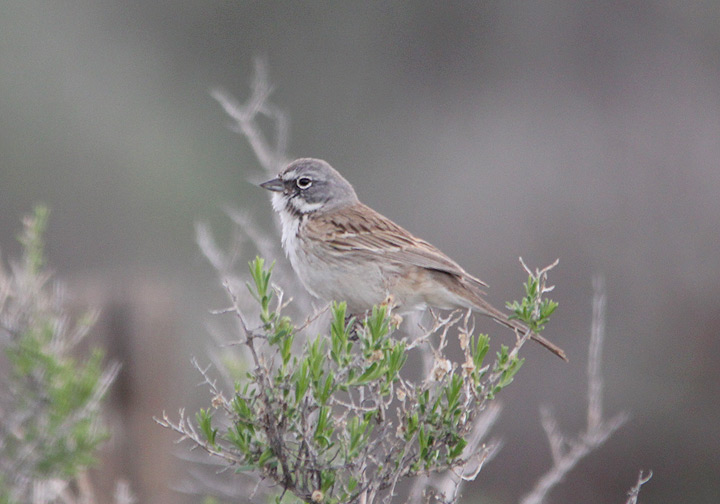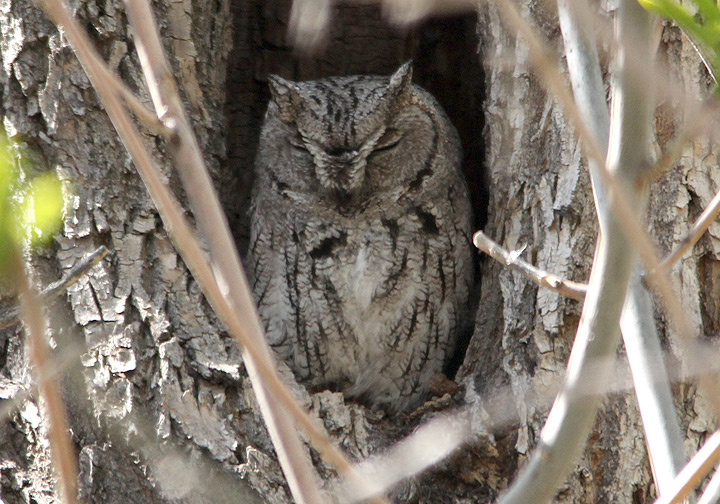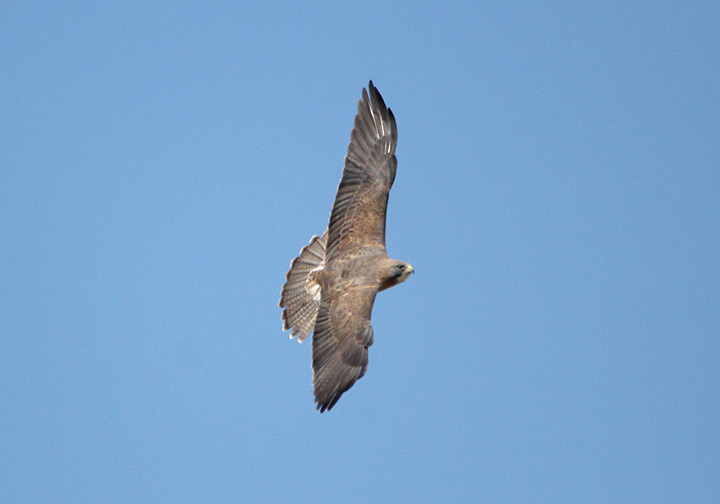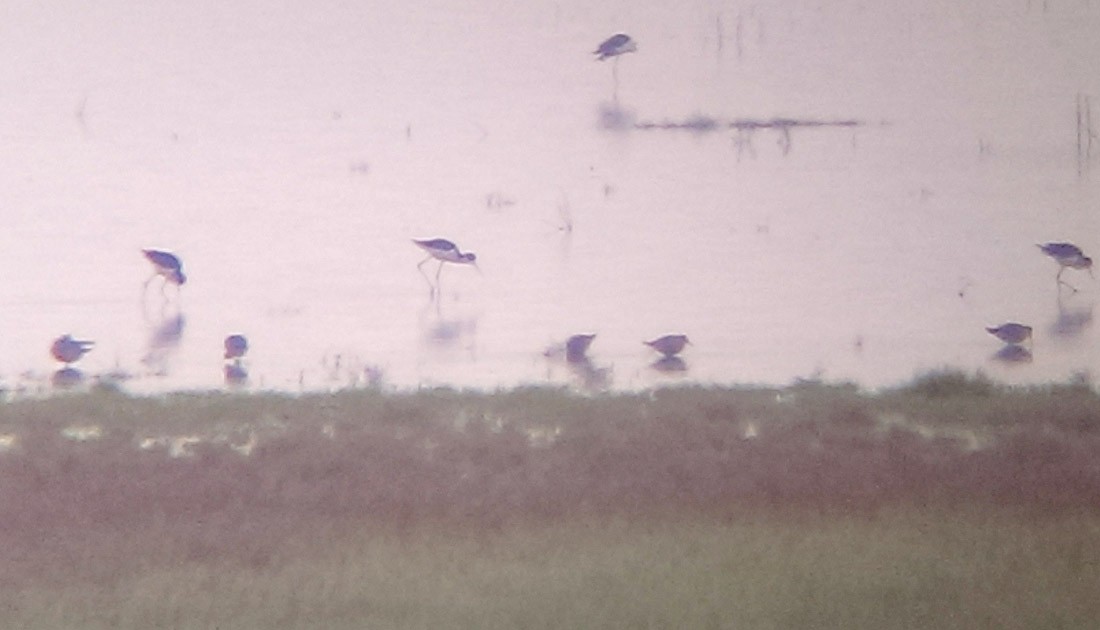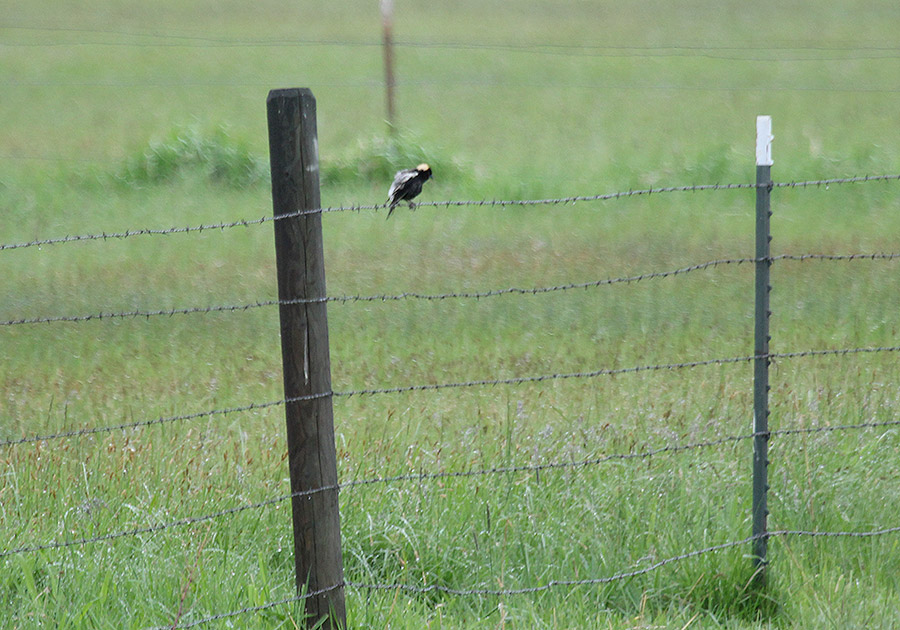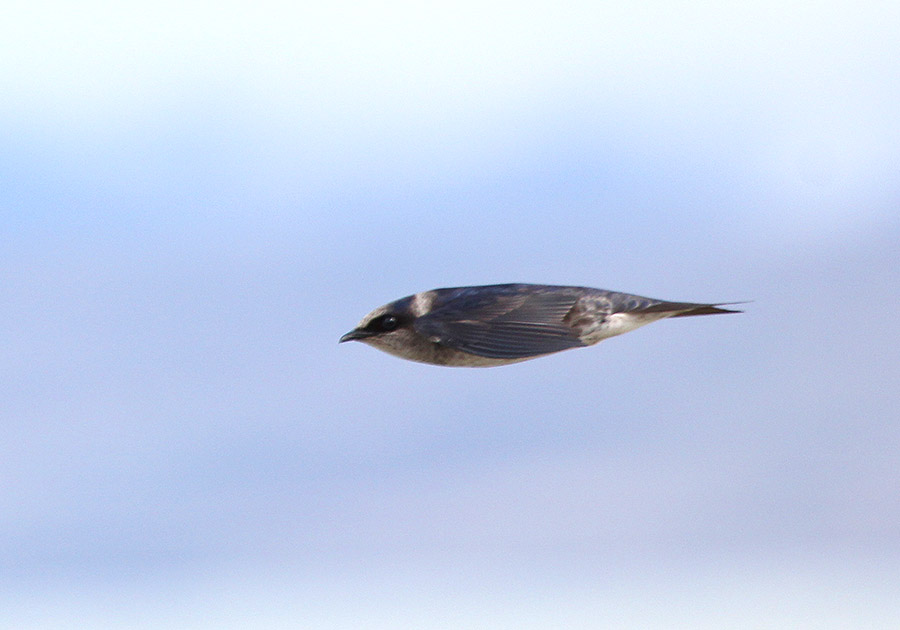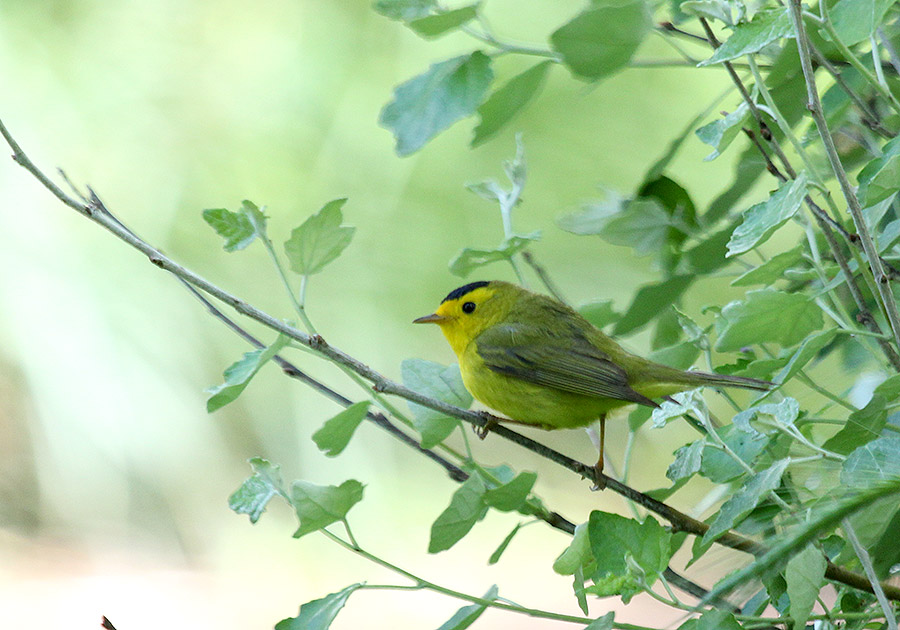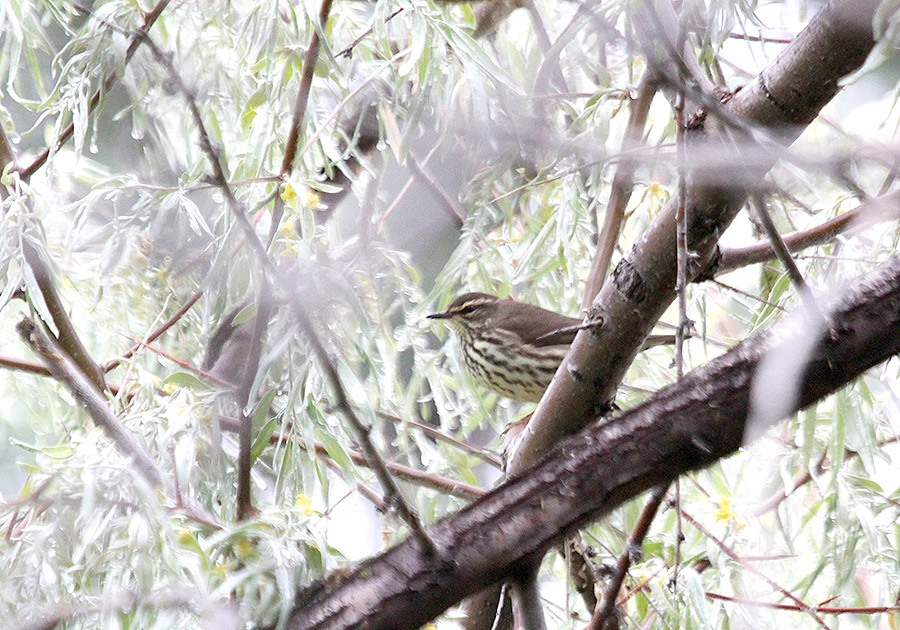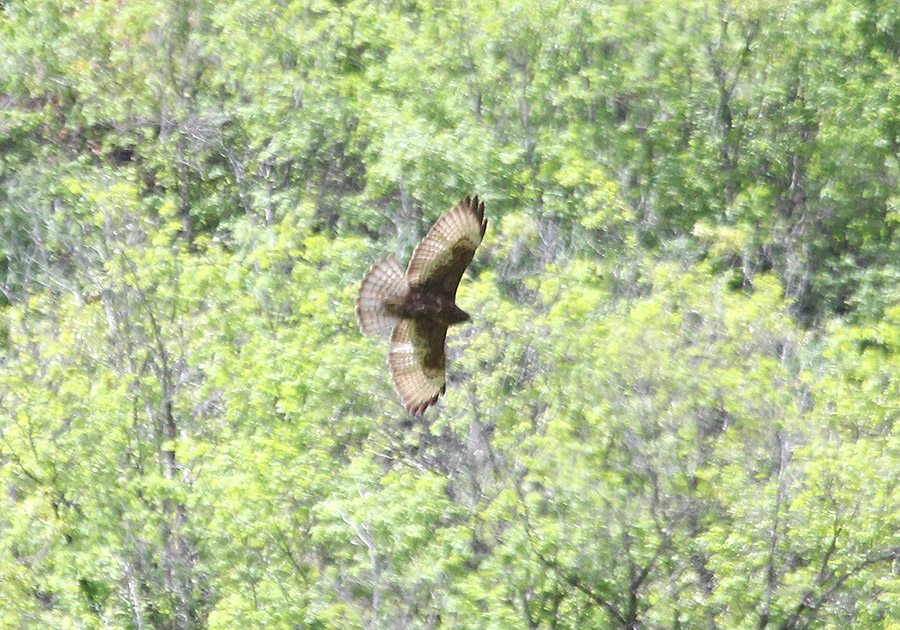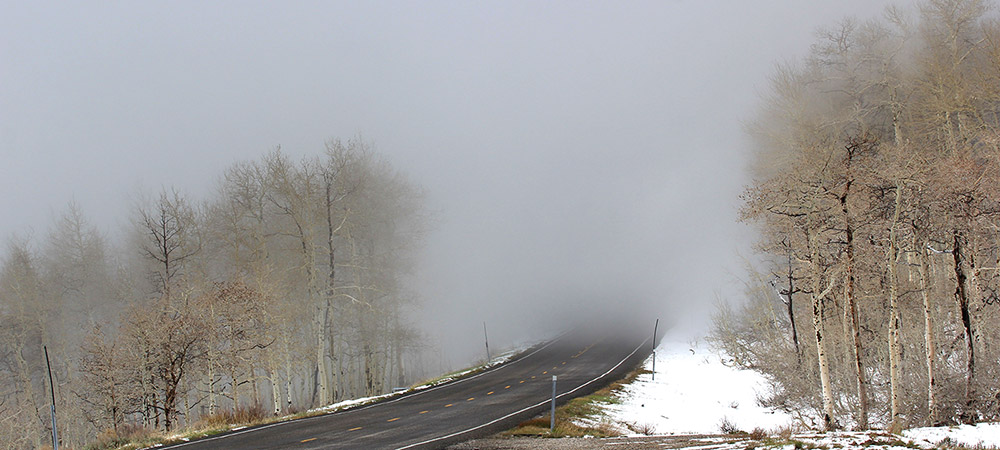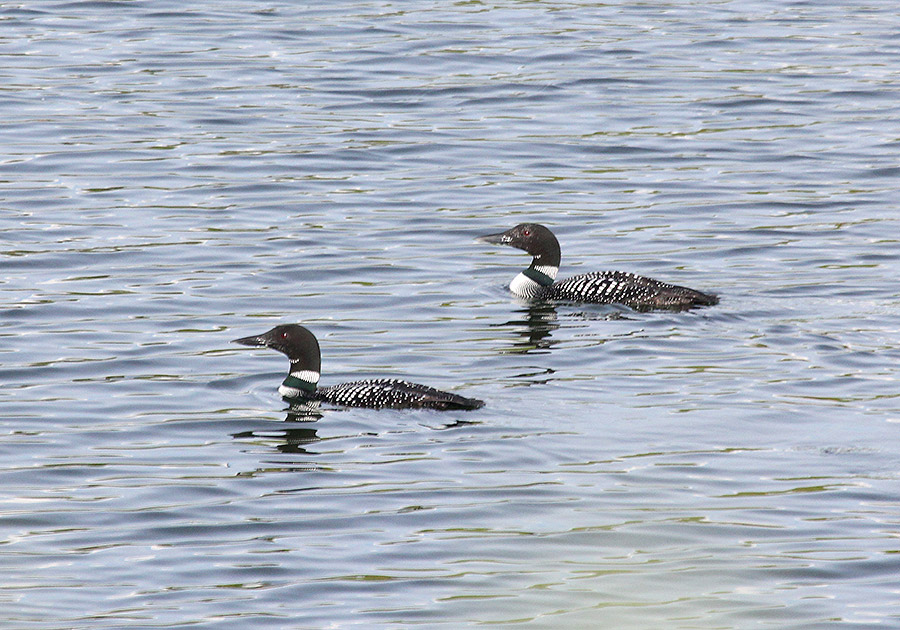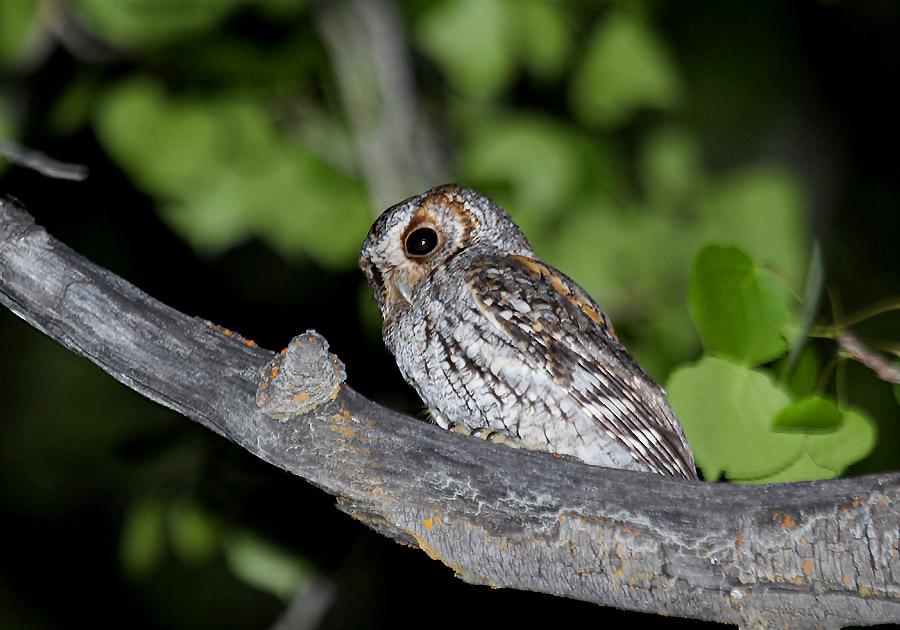On Friday the 17th, Chris Monahan, Kenny Frisch, and I left Salt Lake to bird our way down to Monticello taking in numerous stops at out of the way and underbirded locations in Carbon, Emery, and Grand Counties. Our first stop at Soldier Summit wasn't too promising with no birds... Hopefully, not a sign of things to come. As we headed down Price Canyon near the Castle Gate we saw an OSPREY--the first of 4 for the day and my first of the year.
A stop in Bear Canyon at the mouth of the canyon and we heard the first singing LAZULI BUNTING of the year, while in Helper on 1000 North east of US-6 we had 2 VESPER SPARROW. In the parking lot at the Carbon Country Club an early COMMON YELLOWTHROAT was a nice surprise. Driving through Wellington we snagged the 2nd OSPREY of the day. At the Wellington Cemetery we were treated to a TOWNSEND'S SOLITAIRE, a LARK SPARROW, and an ORANGE-CROWNED WARBLER. The cemetery sits on a high spot north of town and might be a really good check in May and September when migration is in full swing.
We checked out the East Carbon WTP where 2 COMMON LOON, 16 FRANKLIN'S GULL, 6 WHITE-FACED IBIS, 1 LONG-BILLED CURLEW, and Yellow-headed Blackbird provided some good desert birds. WE had passed through some great shrubsteppe on the way out where we snagged SAGE THRASHER for the trip. The habitat looked good for Sagebrush Sparrow and I figured on Sunday coming home we might try for it on a side road.
We drove along the base of the Book Cliffs going south--at Water Canyon a WESTERN KINGBIRD was one of just a few birds present. Further south at the mouth of Horse Canyon a huge mixed flock of mostly Gray-headed Juncos with a few Pink-sided provided good looks. A BLACK-THROATED SPARROW here gave some great looks. Horse Canyon looks like it could be an awesome locations to visit later in the year when warmer. The Book Cliffs in general may be one of the most underbirded areas in the state.
In Woodside at the Price River, several SAY'S PHOEBE and a flock of BREWER'S SPARROW were the bulk of the birds present. Our next stop at the Green River WTP had a lot of good waterbirds including: 2 BLUE-WINGED TEAL, 4 LESSER YELLOWLEGS, WHITE-FACED IBIS, a hybrid GADWALL x MALLARD, and around 100 FRANKLIN'S GULLS. At Green River State Park a SNOWY EGRET was hanging out near the boat launch. After Green River we hit rain and the birding was pretty slow to Moab--the rain was coming down hard, and we mad ea side trip up the Colorado River to watch the water cascading off the cliffs. There were waterfalls everywhere.
Our last birding stop of the day was at Ken's Lake where we had 2 more OSPREY for the day, as well as 13 WHITE-FACED IBIS, a MARBLED GODWIT, and lots of FRANKLIN'S GULLS. Near the dam there were quite a few SAVANNAH SPARROW in the grass. As we drove into Monticello the temps dropped and it started to snow. We met up with the rest of the group for dinner at Wagon Wheel Pizza and had a good time talking birds, the weather, and the area. We cancelled the owling for the night given the weather--and in a rare moment opted to get a hotel instead of set up and then take down camp in the snow in just a few hours. I think we were all glad to do this and get a comfortable and warm nights sleep before going for grouse.
In the morning we woke to apparently clear skies, and temps hovering in the low 30's. The group met and we headed off towards the lek. Once on the dirt roads it became apparent things might turn south quickly--and they did on the first patch of clay we hit, with my truck sinking several inches into the road. We stopped and backed the group up--there was no way we would reach the lek today. I realized I had never been down here after a torrential down pour and despite having driven on the road when wet before, I had never seen it like this. It would likely need a warm day with lots of wind--or several days to dry out. This was a total bummer and threw us into recovery mode. Heading back to town and trying to clean some of the mud off our boots and vehicles, we formulated a different plan. Head south to Bluff, then spend the day birding back to Monticello. It wasn't grouse, but it was birding.
Heading south through Blanding we hit thick fog, before descending lower into the desert, and 50 degree weather and sun in Bluff. We headed west to Comb Wash to bird on the Lime Ridge where the open shrubby desert was green from the recent weather. Against the red rocks and distant Blue Mountains it was a gorgeous scene. A WILD HORSE provided a nice surprise, while the birding was slow and limited to just a few species. BLACK-THROATED SPARROW and HORNED LARK dominated the habitat--while SAGE THRASHER and BREWER'S SPARROW were also present in small numbers.
Back towards Bluff we stopped to check out Sand Island Campground, and the riparian habitat west of US-191 along the San Juan River. Here we were treated to our first LUCY'S WARBLERS of the trip as well as gobbling WILD TURKEY, a LINCOLN'S SPARROW along the river, and a surprise WHITE-THROATED SPARROW singing from across the river in the same patch of trees where we had one 2 years ago on this same trip.
At the campground we had great looks at CANYON WREN and relaxed enjoying the morning sun. A quick stop at Navajo Twins Ponds in Cottonwood Wash was a little disappointing as the ponds were almost completely empty. There were a few birds but most of the usual suspects were missed. No waterbirds of any kind--but Mike Hearell and Taylor Abbott flushed a WHITE-WINGED DOVE from the west side of the ponds where one has been seen in the past. We stopped along Mission Road heading east out of town where we had Chihuahuan Raven last year. There were no ravens, but a large flock of WHITE-FACED IBIS, were accompanied by 3 MARBLED GODWIT, and a few FRANKLIN'S GULLS in a flooded field. Very cooperative WHITE-CROWNED SPARROWS allowed for a nice photo op as well.
Making our way back north and up in elevation we headed to Blanding to check out the waste water treatment ponds south of town--always one of the best stops of the trip. And things were no different this year. 13 species of waterfowl graced the glassy water. 6 BLUE-WINGED TEAL highlighted the mix which had a whopping 61 CINNAMON TEAL as well. LONG-BILLED CURLEW, WHITE-FACED IBIS, FRANKLIN'S GULL, and EARED GREBE rounded out the notable waterbirds, while 2 GOLDEN EAGLES circle overhead. These ponds have been a stable source for GREAT-TAILED GRACKLE in San Juan County, with 3 present on our visit.
Keeping with the northward pattern we stopped at Recapture Reservoir, which seems to be lower and lower every year. This year it was only maybe 3 football fields long. That didn't stop the birds from using it--as usual a good assortment of waterfowl, grebes, ibis, gulls, and shorebirds were present. Of note were MARBLED GODWIT, WILSON'S PHALAROPE, and FRANKLIN'S GULL. Along the surrounding hillsides we added RED-NAPED SAPSUCKER, all 6 swallow species, BLACK-THROATED GRAY-WARBLER, and CASSIN'S FINCH.
Just a few miles up the road is Devil's Canyon Campground which is usually very birdy--but on this trip it was mostly quiet. We only tallied 12 species in almost an hour--but most were new for the trip like GRAY FLYCATCHER, PYGMY NUTHATCH, WESTERN BLUEBIRD, and MOUNTAIN CHICKADEE. Notably absent this year were finches and woodpeckers that usually keep us busy here.
We made our way into Monticello and to Lloyd's Lake on the west side of town. The lake wasn't uber-birdy, but we had great looks at an OSPREY that was perched low in a tree over the road--a local alerted us to the cooperative "Red-tailed Hawk" as he put it--and we quickly enjoyed a calling all Ospreys for the remainder of the trip Red-tails! We also picked up WHITE-BREASTED NUTHATCH for the day with great looks before continuing into the Abajo's for some mountain birding.
It was windy on the east slope and at Dalton Springs Campground there were few birds--6 species might have been the smallest checklist we've put together here. Driving around the north slope we had decent looks at WILD TURKEY, WESTERN BLUEBIRDS, and great views of Canyonlands below to the north. We ended up at Foy Lake where we had never birded before, and had a REDHEAD and PIED-BILLED GREBE on the water. Nearby in the trees we added STELLER'S JAY, WESTERN SCRUB-JAY, and TOWNSEND'S SOLITAIRE.
We jetted back across the mountains to town and eventually Clay Hill Road and the Monticello Waste Water Treatment Ponds. Again, the waterfowl numbers were impressive, with 13 species including COMMON MERGANSER, BUFFLEHEAD, and 2 BLUE-WINGED TEAL. We added PEREGRINE FALCON to the trip list as well as VESPER SPARROW before bring an official end to what was one of the strangest grouse days trips we've had. First and foremost, we had no grouse--and the weather had made for odd choices in how we birded. We saw some great birds but it was a little disappointing none-the-less. While most of the group headed northwards, we decided to see if we could make it to the lek, to possibly try again in the morning. The road out was still a muddy mess and a no go; but we tried another route in and made it fairly easy. It could be done. Then came the rains... It poured, and poured, and continued to pour. We headed south to Devils Canyon to camp the night and the rain only got worse. Eventually it broke long enough to set up camp, and turn in for the night--but the rains returned after dark for a couple hours.
Luckily, by midnight it waned and was calm the remainder of the night. Early Sunday we headed to town and picked up Craig and Dale Provost who opted to stay behind and try again. We made our way back towards the lek on the back up road but the rain overnight must have come down in buckets as it was a muddy mess in places. I decided not to risk getting us stuck and called a stop to things. A Sunday morning in Monticello was not an ideal place to get stuck, especially when we can come back next year and so on.
We split with the Provost's and started making our way north, stopping to admire Churh Rock along 191 in the early morning light. Next at Ken's Lake we added RED-BREASTED MERGANSER for the trip and had great looks at flyover OSPREY. We made it into Moab and back to Gail Lea's yard where we were greeted upon arrival by a singing BROWN THRASHER, and then shortly after a calling BLUE JAY, and WHITE-WINGED DOVE. The hat trick in less than 15 minutes! The thrasher provided some great looks, and being only my second in Utah, I enjoyed taking some time to soak it in.
We ventured across town to the Matheson Wetlands Preserve, which in all honesty, I had never birded despite the amount of time I have spent in this area of the state. Mistake on my part. We walked the boardwalk along the south end at the "main entrance" where there weren't a ton of birds. We seemingly eked out every species there, getting LUCY'S WARBLER here, then a BLUE-GRAY GNATCATCHER there, followed by a singing ROCK WREN in the distance, and a NORTHERN MOCKINGBIRD from a nearby shrub. We decided to take a jaunt out towards the river and came into a small flock of WHITE-CROWNED SPARROWS. We started pishing, and 20 feet in front of us a GOLDEN-CROWNED SPARROW popped up and posed for several minutes. I had never had such good long looks at one--and a alternate plumage adult to boot.
While we watched the sparrow the unmistakable song of a WHITE-THROATED SPARROW came from trees directly behind the Golden-crowned. We about lost it--the only thing that could have made it a better day was if a Harrid's Sparrow had popped up for a 4 Zonatrichia day--that didn't happen. The White-throated provided great looks as well, and we enjoyed the great birds before moving on.
We made a few more stops heading north eventually making it to Green River for lunch, and birding Silliman Lane and the Waste Water Treatment Ponds again. MARBLED GODWIT, and BONAPARTE'S GULL highlighted the waterbirds, while 350 FRANKLIN'S GULLS were a big count for here. We ended up driving the Woodside Lower Price River Road towards the Book Cliffs, and had a nice variety of desert birds including BREWER'S, VESPER, and BLACK-THROATED SPARROW along with SAYS PHOEBE and ROCK WREN. This is one location I would like to visit later in the spring for migrants and breeders.
We checked the East Carbon WTP again, but there weren't any real treats this time around. We did find a couple SAGEBRUSH SPARROWS a little to the west and got great looks before speeding through Price, and back to Utah County. We made one last stop to show our buddy Chris a WESTERN SCREECH-OWL for a life bird.
On our way back to the freeway we added one last lifer for his trip list with a gorgeous pair of SWAINSON'S HAWKS at a nest site.
And just like that our 3rd Gunnison Sage-Grouse Days trip came to an end back in Salt Lake almost 900 miles later. Our group of 3 tallied 123 species for the weekend, while the field trip on Saturday netted about 100 just for the day. Not a bad weekend, and despite things not working out for us several times the overall weekend was a success--and next year will only be better!
Labels: carbon county, emery county, fieldtrip, grand county, raptors, san juan county, sparrows, trip reports, upland game birds, utah county
